Summer + Horses = Endless Fun.
Well, endless only in our minds. Our budgets often dictate otherwise. But a resourceful rider can find horse activities that don’t break the bank, plus devise shortcuts to save cash without sacrificing the fun.
Here we’ll offer ideas and tips for making memories with your horse while the sun shines without spending a fortune. Do you have ideas to share? Send them to HorseandRider@aimmedia.com.
Go National
National parks boast some of the world’s greatest scenery, and many can be enjoyed from horseback for a pittance. Reservations are required to horse camp in national parks, so plan ahead. Check all fees (usually between $20 and $50), and inquire about rules and regulations, including which trails are open to horses and if grazing is permitted. Obtain all necessary permits and vaccination documents.
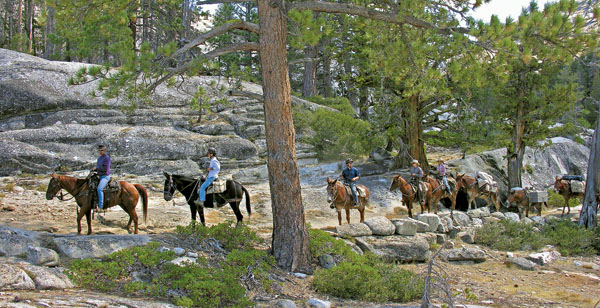
Here are a few horse-friendly parks to consider.
• Big Bend National Park, Texas. Trail riding and horse camping are allowed. All gravel roads are open to horses, as well as cross-country travel, except in some specified areas. One of the campsites has a corral large enough for eight horses.
• Yosemite National Park, California. While off-trail riding is prohibited, some trails are open to horses. Designated stock campsites allow overnight horse camping. Overnight boarding facilities, spot packing, and day rides are available, with liveries located within the park.
• Great Smoky Mountains National Park, Tennessee. Five drive-in horse camps provide ready access to backcountry trails within the park. Most campsites are open April through October.
• Theodore Roosevelt National Park, North Dakota. The Roundup Group Horse Campground is open May through October. Parking for several horse trailers and/or RVs, tenting platforms, raised grills, restrooms, and a covered picnic pavilion are available.
• Assateague Island National Seashore, Maryland/Virginia. Made famous among horse lovers in the classic book Misty of Chincoteague Assateague Island offers two campsites for horse camping October through April. Each site accommodates up to six people and six horses.
Shop at the Swap
Need multiple buckets, halters, longe lines? Check the next tack swap in your area. Shopping for a growing young rider? Look for 4-H swap meets in your area. Be sure to check quality and condition, and don’t buy more than you need, even though low prices may tempt you.
Low-Cost, Short-Term Clinic
Some clinics last a week and require you to haul your horse to a destination—that means big bucks for the clinic, travel, lodging, food. Not to mention time off work and away from other duties. Weekend clinics offer intense instruction for a smaller time and money commitment. If riding in the clinic still isn’t feasible, audit it! For a nominal fee, you can learn from the other riders’ experiences and apply them at home with your horse.
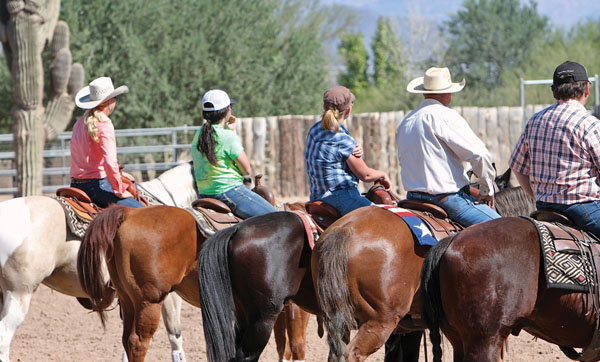
Parades: Big Fun, Little Cost
Many parades cost nothing to enter! Small-town parades often need entries, and welcome you to sign up cost-free.
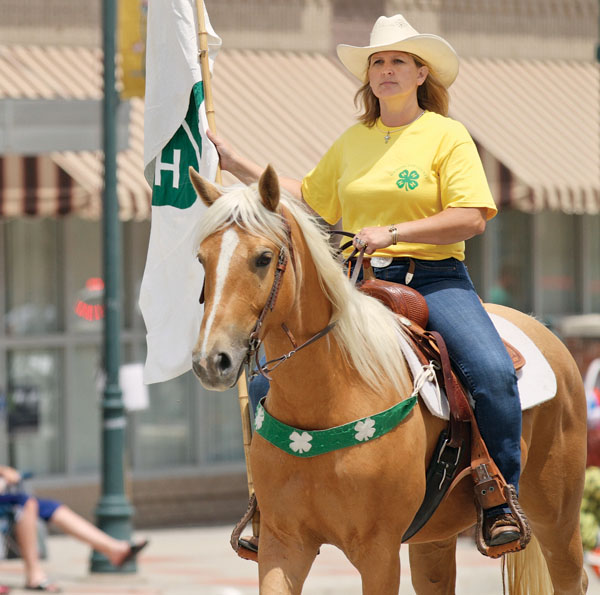
What will your parade-riding expenses entail? Fuel to haul your horse to the parade can be costly, but staying local minimizes that expense and removes the fees for overnight lodging. You’ll also spend a little cash making or piecing together outfits and embellishing your tack to coincide with the parade’s theme—but creativity is your thrifty friend in this case. If you’re concerned your horse might slip on asphalt, purchase protective hoof boots, which can last through years of parade riding. Or save that expense and go barefoot. “Our Peruvian Paso club rides in about three parades per year, and our horses go barefoot,” says Darcie Owen of Elk Grove, California. “They do great with no shoes.”
Looking for detailed parade-prep tips? Visit HorseandRider.com this month for an avid parade-rider’s advice on preparing your horse for the event.
Lessons for Less!
When you want to improve your riding or overcome an obstacle, look to lessons. Yes, they can be pricey. But there are ways to lessen the wallop to your wallet.
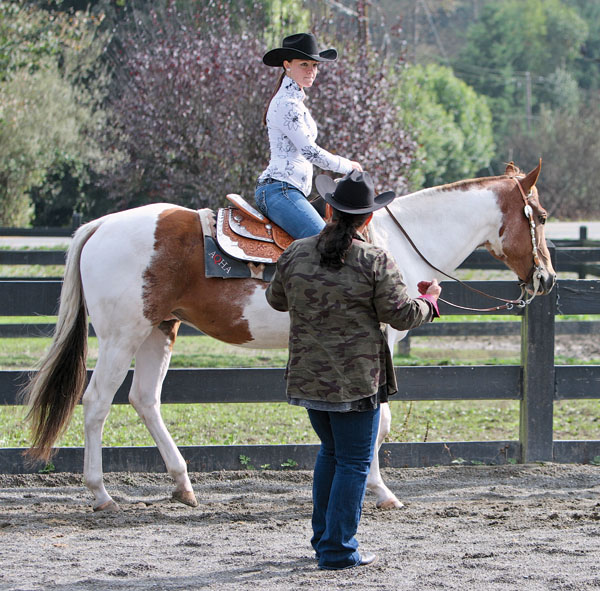
• Try group lessons. Most trainers charge significantly less for each participant in a group lesson than the price of a private lesson. Over the course of many lessons, those savings add up. Plus, you’ll learn from the other riders, your horse will be exposed to other horses, and the group atmosphere keeps the learning environment fun.
• Buy in bulk. Look for package deals on a series of lessons or on advance payment. Cash is king! It’s hard to resist upfront payment and easier to offer a discount.
• Trade with friends. It’s almost certain you have a riding buddy with more experience than you have. She might not be a professional, but you can still learn a thing or two from her. Offer to trade services with her—lessons for babysitting, house cleaning, accounting work, or another unique skill you possess.
Healthy Food, Healthy Wallet
Step away from the snack bar. Not only are you probably eating junk when you visit the concession stand; it’s expensive junk. The cost of that hot dog, bag of chips, and soda at the horse show or the burger meal with fries and soda on the way to the trail ride adds up over several outings. For healthier and more cost-effective meals on horsey activity days, pack a lunch. Trail-trial competitor Kathy Newman, also a registered dietitian and board-certified specialist in oncology nutrition, notes that not only will your $20 bill stay in your wallet, but your snacks will be more nutritious if you bring:

• Dried fruit
• Nuts
• Fresh fruit, like apples
• Whole-grain crackers with peanut butter or a peanut butter sandwich on whole-grain bread
• Sandwich with lettuce, tomato, and lean meat, like turkey
• Hard/aged cheese
• Jerky
• Thermos of water
Transportation Tips
Having fun with horses often requires hauling them away from home. Here are a few tips to keep in mind prior to and during travel with your horse this summer.
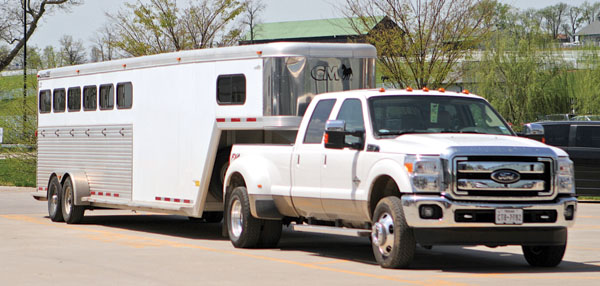
1. Keep your tow vehicle maintained. A breakdown on the road with your horse in the trailer is dangerous, inconvenient, and—most of all—expensive. Regularly servicing your truck is well worth the investment.
2. Fill your fuel tank before you hook up. Leave your trailer at home, and shop around for gas the night before you depart. You’ll have more options, and you’ll be ready to hit the road first thing in the morning.
3. Check your route. Make sure you won’t run into unexpected construction or detours that can lead to wasting time and fuel.
Show on a Shoestring? Sure!
Schooling and open shows don’t have the high pressure—or high cost—of bigger shows. If you crave competition, but can’t or don’t want to invest in large show circuits, these are great options. You’ll need functional tack and discipline-appropriate apparel, but don’t worry about silver and bling. At these lower-level shows, go for clean and presentable over flashy and fashionable. Some schooling shows offer reputable, carded judges who can give you great insights about your skills and your horse’s abilities.
Cost-saving tip: Investigate if you can pre-enter for a discount on entry fees. This saves money and time, because you won’t be at the show office in a rush to enter on the day of the event.
Trail Trials: Test Your Skills, Not Your Budget
Is your horse a real trouper on the trail? A trail trial might be fun to try. The course covers a few miles and 10 to 15 obstacles, over which you and your horse are judged on calmness, safety, effectively executing the obstacles, etc. As at a schooling-level horse show, your tack for a locally hosted trail trial should be clean, safe, and serviceable, but it needn’t be fancy. Costs include hauling to and from the event and your entry fee, which usually runs about $25 for local clubs’ trail trials.
Try Your Luck
Combining a casual trail ride with a game of poker might sound crazy, but it’s actually a lot of fun. Here’s how it works: Before your ride, you’ll pay a small fee to purchase a poker hand. As you ride the trail, you’ll visit five stations where you’ll draw an envelope containing a card, not knowing which card you’ve drawn. As you ride, you’ll stow your cards in a pocket or saddle pack. Once back at the finish of the ride, you’ll turn in your five cards in their envelopes, and a host or volunteer for the ride will open the envelopes, revealing your hand. If you’ve drawn a winning poker hand, you win a prize. Most poker rides are fundraisers for clubs or organizations, so there will be an entry fee. Typically, a hand of five cards costs about $25. If you’re a real gambler, you can add additional hands for about $5 each.







